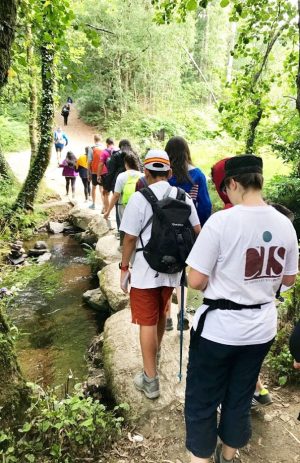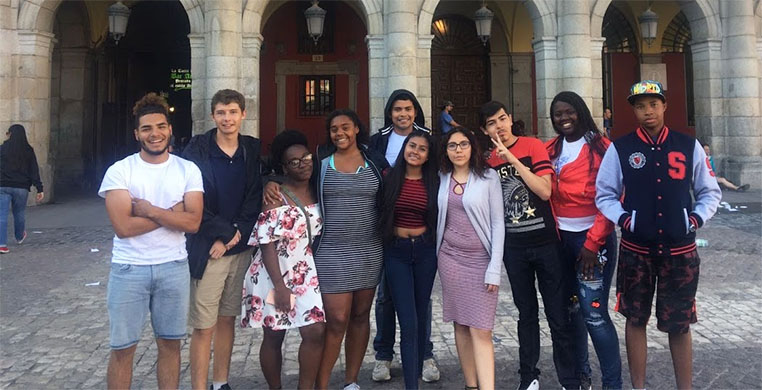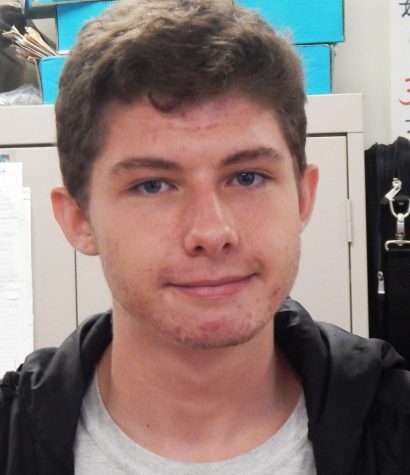My Summer Experience Walking the Camino de Santiago
Author Chris Bellina, 2nd from left, was one of ten students from Miami’s Take Stock in Children Program that traveled to Spain this summer.
Imagine you just received a big scholarship and a few days after signing the contract, bang, you get an email from the scholarship organization inviting you on a trip to Madrid, Spain, and you had never been on a plane before or out of the story.
I went to Madrid this summer with 9 other kids from Miami who are involved with Take Stock in Children. We did not just stay in Madrid; we also went on a 100 kilometers walk for 8 days known as El Camino de Santiago.
I got involved with Take Stock in Children back in 9th grade when I heard from my friend about a scholarship program that was looking for students with good grades. I was then called to the office one day in school and told by a representative to attend a meeting at Miami Dade College, where I listened to what they offered and then happily signed the contract.
Take Stock in Children, according to their website, is a ”nonprofit organization whose mission is to give low-income students scholarships to escape the cycle of poverty through education and to give them a better life.”
My fellow travelers and I were given a list of items to buy and bring with us, as well as a list of guidelines of what we could do and not do on the trip because if we didn’t behave well or violated one of the guidelines, our scholarship would have been revoked. We had a couple of meetings, one telling us what the walk of Camino de Santiago was like by a person that had been on the walk and told us about his experience.
We also had a press conference with the Mayor of Miami, and some of us were even interviewed by a reporter from The Miami Herald. The article was titled ”These teens have never been on a plane, this will a trip of a life time.” We would be set to leave June 19.
The Camino de Santiago is a famous hike that runs all through Spain and can take up to 40 days to complete. The Camino starts in France, but we started much later in the walk. Along the way we met many Americans and saw lots of amazing scenery and animals, such as cows, horses, and donkeys.
After spending three days in Madrid, we walked about 47 miles of the Camino for 8 days to get a certificate written in Latin, showing we completed the walk. Many people take the walk for different reasons such as religion, spiritual reasons, or to be thankful for what they have gotten in their life or over time.

This walk has also been known to bring others closer together. My group did get closer as we walked for 8 days and talked all through the walk and getting to know each other a little better. One tradition is picking up a rock during the walk and leaving something negative behind so you can move on with your life.
My favorite part of the trip was hanging out and eating meals together with my fellow travelers. The challenges for me were not knowing that much Spanish compared to some of the other kids and not really being able to communicate with the Spaniard kids from the trip. As a result of the language barrier I didn’t talk to them that often.
The culture in Europe is much different compared to Miami. For example, the people in Spain eat much later than in the U.S. I was not used to this because I eat everything early. Breakfast was around 8:00 am, pretty normal, but lunch, or ”comida” as they called it, wasn’t until 2:00 pm, and dinner was between 8:30 and 9:00 pm.
Another cultural difference was Spanish young people can’t get their driver’s license until they are 18 years old, and they can’t get tattoos or piercings before they are 18 as well.
The expenses for the trip, which included the hotels where we stayed, all the meals, and the plane fare, were paid by the City of Miami and by the International Studies Foundation, a Spanish-based nonprofit. The estimated cost for the entire trip was about $30,000.


